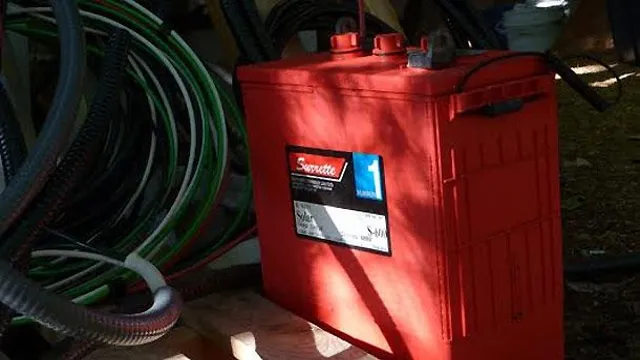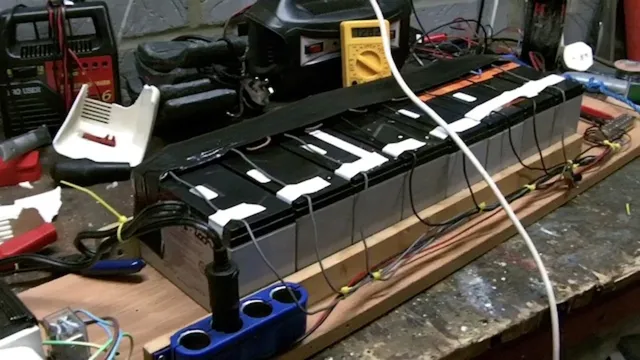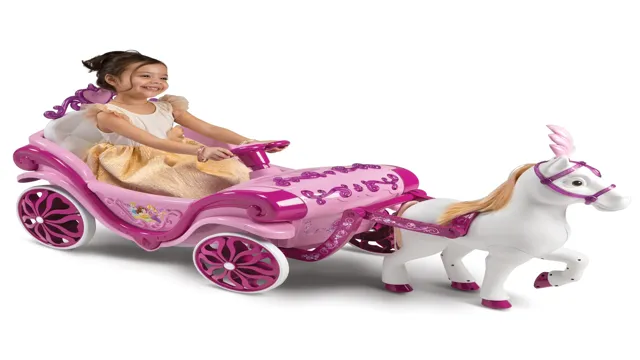Revive Your Power: DIY Solar Battery Backup with Recycled Electric Car Batteries
Have you ever thought about generating your own power through solar panels but are put off by the high cost of a battery backup system? Well, what if we told you that you could create your DIY solar battery backup using used electric car batteries? The idea of reusing batteries from electric vehicles is not only eco-friendly but also cost-effective, giving you the chance to power your home with renewable energy without breaking the bank. With this DIY project, you’re giving a second life to the batteries that would have otherwise been discarded by the automotive industry while reducing the environmental impact of battery production. It’s a win-win situation that allows you to save money while promoting sustainable energy.
But before you dive headfirst into this project, there are a few essential factors to consider. How many batteries will you need? What type of solar power system do you have installed? What’s the battery capacity, and how long will it last? Don’t worry; we’ll cover everything you need to know in our step-by-step guide to creating your solar backup system using used electric car batteries. If you’re ready to take the leap towards clean energy, follow us as we explore how to repurpose used electric car batteries to create your very own DIY solar battery backup.
Introduction
Are you looking for an affordable way to power your home without relying on the grid? One solution to consider is creating a DIY solar battery backup using used electric car batteries. These batteries can provide a sustainable option for storing solar energy. You can easily source them from junkyards or car dealerships.
But before jumping into this project, make sure to do your research and get safety equipment, as working with batteries can be dangerous. Additionally, remember to properly configure the batteries for solar storage before installation to optimize their performance. With the right planning and execution, a DIY solar battery backup can save you money and provide a reliable source of energy for your home.
Keep in mind that there may be maintenance and replacement costs associated with using used batteries, but the overall benefits of eco-friendliness and self-sustainability often outweigh these concerns.
Why DIY Solar Battery Backup?
DIY Solar Battery Backup Are you looking for a reliable source of backup power in case of emergencies or power outages? DIY solar battery backup may be the solution you need. By harnessing the power of the sun, you can generate electricity to charge a battery that will provide reliable backup power for your home or business. With the help of a solar panel, charge controller, and battery, you can create a simple and affordable system that will help you stay prepared for unexpected situations.
DIY solar battery backup systems are not only eco-friendly but also offer peace of mind knowing that you have a backup power source when you need it the most. Join the movement toward sustainable energy and consider creating a DIY solar battery backup for your home or business today.

Benefits of Using Electric Car Batteries
Electric car batteries have revolutionized the automotive industry by allowing for safer, cleaner, and more cost-effective forms of transportation. These batteries, powered by electricity, have become increasingly popular due to their numerous benefits. Not only do electric car batteries have lower maintenance costs than traditional internal combustion engines, but they also emit zero or minimal greenhouse gas emissions, making them an environmentally friendly alternative.
Additionally, these batteries offer improved fuel economy, better acceleration, and a smoother driving experience. In short, electric car batteries are a powerful and practical tool for anyone interested in sustainable and efficient transportation.
Choosing the Right Electric Car Battery
If you’re looking for a cost-effective way to set up a solar battery backup system for your home, you may want to consider using used electric car batteries. Many electric cars have lithium-ion batteries that are replaced after several years of use, but these batteries still have plenty of life left in them and can provide a reliable power source for your home. Before choosing a battery, it’s essential to consider its capacity, voltage, and compatibility with your solar panels and inverter.
You can also conduct some basic tests to analyze the battery’s performance and condition. Moreover, the cost of the battery and the potential savings you can achieve with it should be taken into account. Overall, with proper research and planning, you can benefit from using used electric car batteries for your DIY solar battery backup system.
Factors to Consider
Choosing the right electric car battery is a significant decision that requires careful consideration of several factors. The first and perhaps most crucial factor to consider is the battery range. How far you can travel between charges should determine whether or not a battery is suitable for your needs.
A higher range means less frequent charging stops, which translates to convenience and improved commuting experience. Another important factor is the battery’s charging speed. Will your battery charge fast enough to accommodate your lifestyle? You don’t want to spend hours waiting for a full charge.
Additionally, take into account the battery’s size and weight, especially if you plan on carrying passengers or cargo. Lastly, don’t forget to consider the battery’s warranty and cost. A good warranty ensures that you’re protected in case of any faults while a reasonable cost means the battery is a good investment.
When all these factors are put into consideration, you’ll be better equipped to choose the right electric car battery that suits your needs.
Comparison of Battery Types
Choosing the right electric car battery is an important decision that will impact the performance, cost, and environmental impact of your vehicle. There are several types of batteries available, including lead acid, nickel-metal hydride (NiMH), and lithium-ion (Li-ion). Lead acid batteries are the oldest and most common type of electric car battery, but they are heavy and have a limited range.
NiMH batteries are lighter and have a longer lifespan than lead acid batteries, but they are less energy-dense and therefore have a shorter range. Li-ion batteries are the newest and most advanced type of electric car battery, with a high energy density and long lifespan. They are also more expensive than other types of batteries, but their superior performance makes them a popular choice for electric cars.
When choosing an electric car battery, consider your driving habits, budget, and environmental concerns to find the best option for you.
DIY Solar Battery Backup Installation
Are you interested in setting up your own solar battery backup system? Using electric car batteries as your energy storage solution is an eco-friendly, cost-effective way to power your home. The first step is selecting the right battery pack based on your specific energy needs. Once you obtain the battery, you’ll need to install it in a safe location away from any flammable materials or moisture.
Next, you’ll need to connect your solar panels to a charge controller, which regulates the amount of energy being stored in the battery. Finally, you’ll need to connect your inverter to the battery pack, converting DC energy to AC energy for use in your household appliances. With a little bit of research and some hands-on work, you can create a DIY solar battery backup system that will keep your lights on and your devices charged even during power outages.
Best of all, you’ll be doing your part to reduce your carbon footprint and live a more sustainable lifestyle.
Step-by-Step Guide
Are you looking to create a solar battery backup system for your home? Installing a DIY solar battery backup can seem like a daunting task, but with the proper guidance, it can be accomplished with ease. First things first, you’ll need to determine your power needs and select a battery that can accommodate them. One option to consider is a deep-cycle lead-acid battery as they are cost-effective and reliable.
Next, you’ll need to install solar panels and connect them to a charge controller that will regulate the amount of charge going into the batteries. Finally, you’ll need to install an inverter to convert the DC battery power into usable AC power. With these steps, you can create your DIY solar battery backup and have peace of mind knowing you’ll have power during an outage.
Tips and Tricks for Success
If you’re looking to install a solar battery backup system for your home, you may be wondering where to start. With a little bit of research, planning, and DIY spirit, you can have a reliable and cost-effective backup power solution that will keep your home running even during an outage. The first step is to assess your energy needs and determine the size of the battery and solar panels you’ll need.
Then, it’s important to choose the right equipment and ensure that it’s compatible with your existing electrical system. Safety is also critical, so be sure to follow all manufacturer instructions and guidelines when installing the system. With a little bit of effort, you can have a solar battery backup system that will provide peace of mind and energy security for years to come.
Maintenance and Troubleshooting
Looking for a cost-effective and environmentally friendly way to power your home during an outage or to reduce energy costs? Consider a solar battery backup system using used electric car batteries. While it may seem daunting to take on such a DIY project, with some research and preparation, it is possible to create a reliable and efficient system. However, it’s important to keep in mind that maintenance and troubleshooting will be necessary to ensure proper functioning.
Regularly checking battery levels, cleaning and inspecting wiring and connections, and ensuring compatibility between components are all important steps in maintaining your system. And if something does go wrong, don’t panic – there are resources available, such as online forums and local experts, to help you diagnose and fix any issues. With a bit of time and effort, a DIY solar battery backup using used electric car batteries can provide peace of mind and savings for years to come.
Regular Maintenance Tips
Regular maintenance is essential to keep your equipment running smoothly without any unnecessary downtimes. However, unexpected breakdowns can still occur, and when they do, proper troubleshooting can minimize the time and cost of repairs. A significant part of good maintenance practice is to schedule routine check-ups on your equipment, such as inspections, cleaning, and lubrication.
Regularly monitoring your machinery can help detect any potential issues before they become serious problems and avoid costly repairs. Additionally, conducting routine maintenance helps to prolong the lifespan of your equipment and avoid unexpected breakdowns. If your machinery still breaks down, troubleshooting can help you spot and fix the issue quickly.
Troubleshooting involves investigating possible causes of equipment failure, identifying the source of the problem, and taking corrective action to fix it. By following these simple tips for maintenance and troubleshooting, you can minimize equipment downtime, increase productivity, and save on repair costs.
Troubleshooting Common Issues
When it comes to maintaining your equipment, knowing how to troubleshoot common issues can save you time and money. One of the most common issues people face is equipment not turning on. Before panicking, make sure it’s plugged in and the outlet is working.
If that’s not the issue, check the power source and ensure that it’s not overloaded. Another issue people often face is a lack of pressure, which can lead to low-quality results. This could be caused by a clogged nozzle or an issue with the water source.
To fix this, clean the nozzle or adjust the water source until the pressure is restored. Finally, if your equipment is producing unusual sounds or vibrations, it may be time for a maintenance check. By catching potential issues early on and knowing how to troubleshoot common problems, you can get the most out of your equipment and avoid costly repairs in the future.
Conclusion
In conclusion, with DIY solar battery backup using electric car batteries, you can turn your home into a true “green machine” while also saving a considerable amount of money. Don’t let old car batteries go to waste! Give them a second life in your home’s solar system and take advantage of the renewable energy at your fingertips. With a little bit of creativity and resourcefulness, you can create a sustainable and cost-effective energy solution that is sure to make your neighbors envious.
So, go ahead and get your DIY on, because the possibilities are endless when it comes to repurposing old electric car batteries for your home’s solar system!”
FAQs
How does a DIY solar battery backup work?
A DIY solar battery backup system stores energy generated by solar panels during the day in batteries, which can then be used to power homes at night or during power outages. Used electric car batteries can be repurposed for this purpose as they still have a lot of life left in them.
How can used electric car batteries be repurposed for a DIY solar battery backup?
Used electric car batteries can be repurposed by connecting them to a solar charge controller and inverter to create a battery backup system. While the batteries may no longer be suitable for use in a car, they still have a lot of capacity and can provide ample power for a home.
Can I use a DIY solar battery backup with my existing solar panels?
Yes, a DIY solar battery backup system can be added to an existing solar panel system. With the addition of a solar charge controller and inverter, excess energy generated during the day can be stored in the batteries for later use.
How long do used electric car batteries typically last in a DIY solar battery backup system?
While the lifespan of used electric car batteries can vary, they can typically last anywhere from 5-10 years in a DIY solar battery backup system. This can provide a cost-effective and sustainable option for homeowners looking to invest in renewable energy sources.





